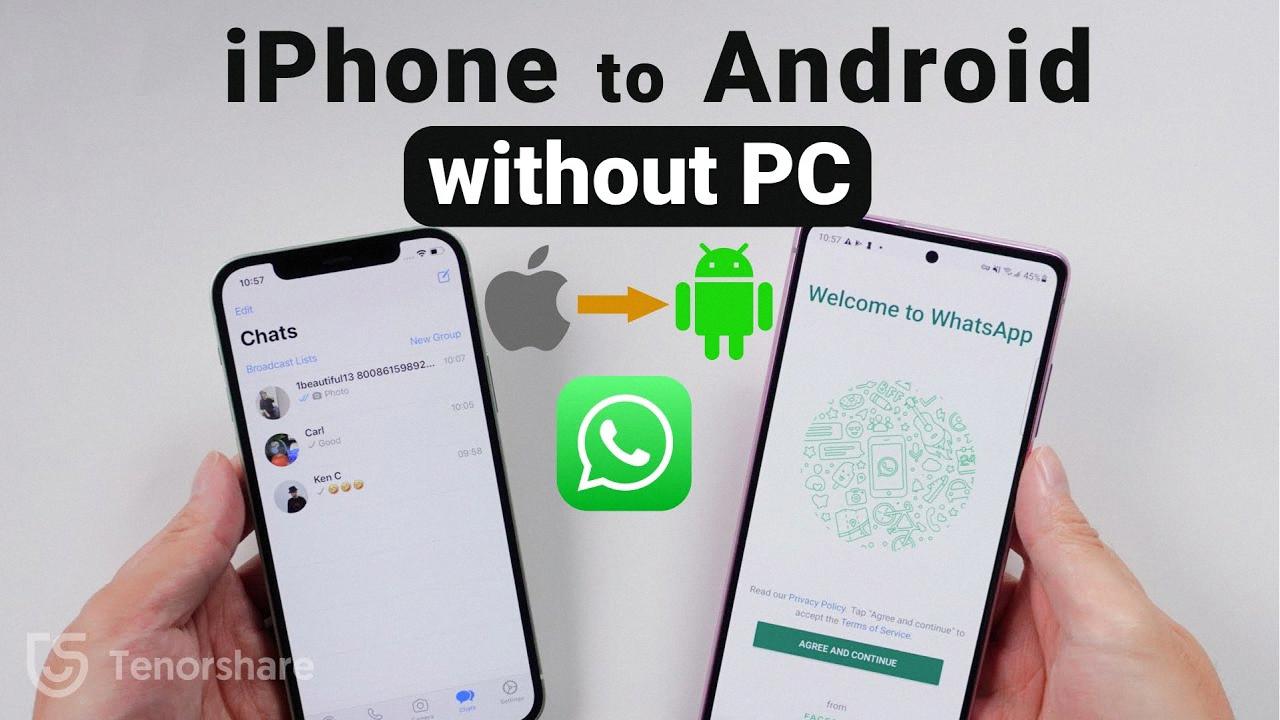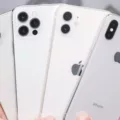Photos are an integral part of our lives. They capture precious moments, document important events, and help us relive memories. With the advancement of technology, transferring photos from one Android device to another has become easier than ever. In this article, we will explore how to transfer photos from Android to Android without using a computer.
One of the most convenient methods to transfer photos is by using the built-in Photos app on your Android device. To start, open the Photos app on your device. Next, select the photos you want to transfer. You can do this by touching and holding one photo, then tapping on other photos to select multiple ones.
Once you have selected the desired photos, tap on the Share icon located at the bottom of your screen. From the list of sharing options, choose “Nearby Share”. This feature allows your device to scan for other devices nearby that have Nearby Share turned on.
After tapping on “Nearby Share”, your device will start scanning for compatible devices. Once it finds the receiving device, you will see it displayed on your screen. Simply tap on the name of the receiving device to initiate the transfer.
Both devices should have their Bluetooth turned on for this method to work. The transfer process will begin, and you will see a progress bar indicating the status of the transfer. Depending on the size and number of photos being transferred, the process may take a few moments.
It’s important to note that both devices need to be in close proximity to each other for Nearby Share to work effectively. Additionally, make sure that both devices have sufficient battery life or are connected to a power source to avoid any interruptions during the transfer.
Another method to transfer photos from Android to Android without a computer is by using a cloud storage service. Apps like Google Drive, Dropbox, and OneDrive allow you to upload and store your photos in the cloud. To transfer photos using this method, you need to upload the photos from the source device to the cloud storage service and then download them onto the receiving device.
To begin, install the cloud storage app of your choice on both devices. Open the app on the source device and upload the photos you want to transfer to the cloud. Once the upload is complete, open the app on the receiving device and download the photos from the cloud storage.
Using a cloud storage service ensures that your photos are safely stored and easily accessible from any device with an internet connection. However, keep in mind that this method requires a stable internet connection and may incur data charges, depending on your data plan.
Transferring photos from Android to Android without a computer is a simple and convenient process. By using the built-in Photos app or a cloud storage service, you can easily share your precious memories with friends and family. Remember to ensure that both devices have the necessary settings enabled and are in close proximity for a smooth transfer.
What Is The Easiest Way To Transfer Pictures From Android To Android?
To transfer pictures from one Android device to another, the easiest way is to use the built-in Photos app along with the Nearby Share feature. Follow the steps below:
1. Open the Photos app on your Android device.
2. Select the photos you want to transfer. To select multiple photos, touch and hold one photo, then tap on the other photos you want to include.
3. Once you have selected the photos, tap on the Share icon located at the bottom of your screen. It usually looks like a box with an arrow pointing upwards.
4. In the share menu, look for the option called “Nearby Share” and tap on it.
Now, your device will start scanning for other nearby devices that have Nearby Share turned on. Make sure the receiving Android device is also enabled with Nearby Share.
5. Once the other device is detected, you will see it listed on your screen. Tap on the name of the receiving device to start the transfer.
During the transfer process, both devices should remain close to each other with a stable internet connection. The speed of transfer may vary depending on the file size and the strength of the connection.
Using Nearby Share eliminates the need for additional cables or third-party apps, making it a convenient and straightforward method to transfer pictures between Android devices.
Bullet list summary:
– Open the Photos app on your Android device.
– Select the photos you want to transfer.
– Tap on the Share icon at the bottom of the screen.
– Choose “Nearby Share” from the share options.
– Wait for your device to scan for nearby devices with Nearby Share enabled.
– Select the receiving device from the list.
– Start the transfer and wait for it to complete.
Remember to ensure that both devices have Nearby Share enabled and are within proximity for a successful transfer.

How Do I Send Pictures From One Phone To Another?
To send pictures from one phone to another, you can follow these steps:
1. Open the messaging app on your phone.
2. Start a new message by tapping on the compose icon or the “New Message” button.
3. Enter the recipient’s phone number or select their contact from your address book.
4. Tap on the attachment icon, usually represented by a paperclip or a camera icon.
5. Choose the option to send a picture or photo from your phone’s gallery or camera roll.
6. Browse through your photos and select the picture you want to send. You can tap on multiple pictures to send them together.
7. After selecting the picture(s), tap on the “Send” or “OK” button to initiate the transfer.
8. Wait for the message to be sent and for the recipient to receive it. This may take a few seconds or longer, depending on your network connection.
Alternatively, you can also send pictures using social media messaging apps like WhatsApp, Facebook Messenger, or Snapchat. The process may vary slightly depending on the app you are using, but generally, you can follow a similar procedure of opening a new message, selecting the recipient, and attaching the picture from your gallery.
Remember to check your data or Wi-Fi connection to ensure a smooth transfer. If you encounter any issues, make sure both phones have the necessary compatibility and settings for picture messaging.
How Do I Get Pictures Off My Android Phone?
To get pictures off your Android phone and onto your computer, you can follow these steps:
1. Unlock your Android device and make sure it is powered on.
2. Connect your Android phone to your computer using a USB cable. Make sure the cable is properly connected to both your phone and computer.
3. On your Android device, you may see a notification that says “Charging this device via USB.” Tap on this notification to access more options.
4. In the notification panel, you will see a list of USB connection options. Tap on “File Transfer” or “Transfer files” (the exact wording may vary depending on your device).
– If you don’t see the USB connection options in the notification panel, you can also go to your device’s Settings, then navigate to “Connected devices” or “Storage & USB” to find the USB connection options.
5. Once you have selected “File Transfer,” a file transfer window will automatically open on your computer. This window will display the contents of your Android device’s internal storage or SD card.
6. Locate the folder or directory where your pictures are stored on your Android device. Typically, the pictures are stored in the “DCIM” or “Pictures” folder.
7. Open the folder containing your pictures and select the pictures you want to transfer to your computer.
– You can select multiple pictures by holding down the Ctrl key (or Command key on Mac) and clicking on each picture.
8. After selecting the pictures, right-click on one of them and choose the “Copy” option from the context menu. Alternatively, you can use the Ctrl+C (or Command+C) keyboard shortcut.
9. Now, navigate to the desired location on your computer where you want to save the pictures.
– You can create a new folder on your computer to organize the transferred pictures, if needed.
10. Right-click on the destination folder and choose the “Paste” option from the context menu. Alternatively, you can use the Ctrl+V (or Command+V) keyboard shortcut.
11. The selected pictures will now be copied from your Android phone to your computer. The time taken for the transfer will depend on the number and size of the pictures.
12. Once the transfer is complete, you can disconnect your Android phone from the computer by safely ejecting the device or unplugging the USB cable.
By following these steps, you will be able to successfully transfer pictures from your Android phone to your computer using a USB cable.
How Do I Transfer Everything From My Old Phone To My New Phone?
To transfer everything from your old phone to your new phone, you can make use of Android’s built-in transfer tool. Follow these step-by-step instructions to ensure a smooth transfer process:
1. Turn on your new phone: Power on your new phone and go through the initial setup process.
2. Select Start: Once your new phone is turned on, you will be prompted to select the “Start” option.
3. Connect to a Wi-Fi network: Choose a Wi-Fi network from the available options and connect your new phone to it. This will enable a stable and fast internet connection for the transfer process.
4. Choose apps and data to copy: On your new phone, you will be presented with a list of apps and data that can be transferred from your old phone. Select the ones you want to copy to your new phone. This can include contacts, messages, photos, videos, music, and more.
5. Use the cable to connect both phones: Take the cable that came with your new phone and use it to connect both your old and new phones. The cable usually has a USB connector on one end and a port specific to your old phone on the other end (such as a micro-USB or USB-C port).
6. Follow on-screen prompts: Once the phones are connected, follow the on-screen prompts that appear on your new phone. These prompts will guide you through the transfer process, including any additional steps that may be required.
By following these steps, you can easily transfer everything from your old phone to your new phone using Android’s built-in transfer tool. Keep in mind that the specific steps and options may vary slightly depending on the make and model of your phones, but the general process remains the same.
Conclusion
Photos are an integral part of our lives, allowing us to capture and preserve special moments and memories. They hold immense sentimental value and serve as a visual documentation of our experiences. With the advancement of technology, we now have the convenience of taking high-quality photos using our smartphones, making it easier than ever to capture and share moments with others.
Photos also play a crucial role in various professional fields, such as journalism, advertising, and social media. They can convey powerful messages, evoke emotions, and enhance storytelling. In the digital age, photos are widely shared and circulated online, making them a universal language that transcends borders and cultures.
Furthermore, photos can be utilized for practical purposes, such as identification cards, documentation, and evidence. They provide a visual record of events, people, and places, aiding in the verification and authentication of information.
With the availability of photo editing software and apps, we can enhance and modify our photos, adding filters, adjusting colors, and cropping images to create visually stunning compositions. These tools give us the ability to express our creativity and artistic vision through photography.
In terms of storage and sharing, technology has provided us with various options. We can easily transfer photos between devices using features like “Nearby Share” on Android devices or by connecting devices with a USB cable. Additionally, cloud storage services allow us to store and access our photos from anywhere, ensuring that our precious memories are safe and easily accessible.
Photos are not just images; they are visual narratives that capture the essence of our lives and experiences. They hold immense personal and professional value, allowing us to express ourselves, remember special moments, and connect with others. With the advancements in technology, we have endless possibilities to capture, enhance, and share our photos, making them an integral part of our modern world.







